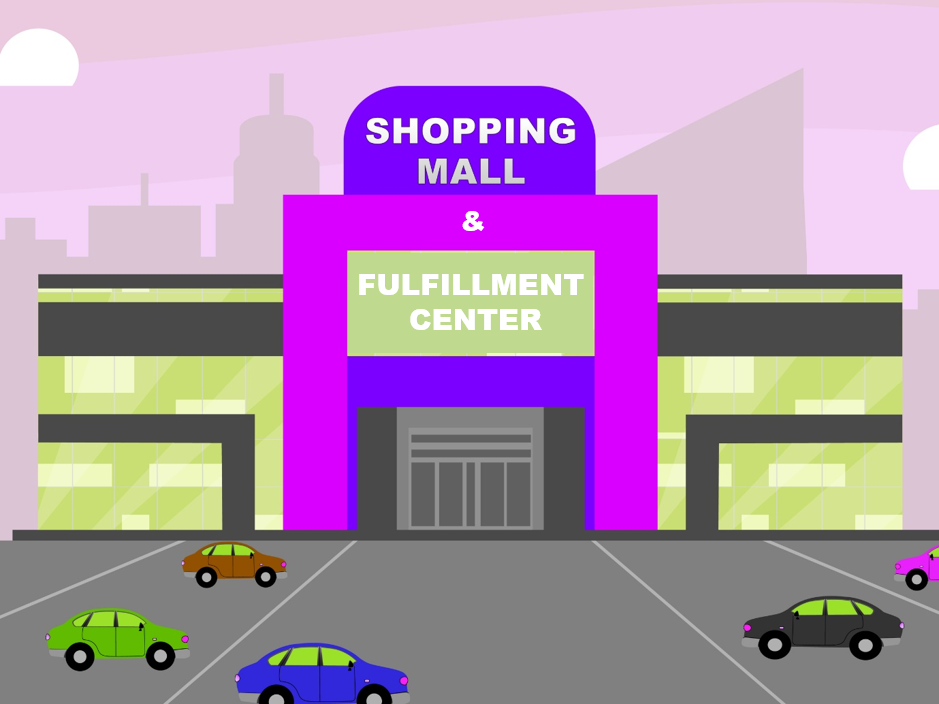Nearly every week it seems another brick-and-mortar retailer declares bankruptcy and closes stores. The press has dubbed this the Retail Apocalypse and some pundits are openly wondering whether we are seeing the death of brick-and-mortar retail. Ken Cottrill, a Global Communications Consultant at MIT Center for Transportation & Logistics, believes the pessimists are wrong. He writes, “High street retailing is far from down and out. Traditional store models — and their supporting supply chains — are being redefined.”[1] A significant part of that redefinition involves omnichannel operations. Adam Robinson, a marketing strategist at Cerasis, bluntly states, “An omnichannel retail strategy is the new norm in today’s supply chains.”[2] Omnichannel operations involve a retailer looking at ways potential customers might desire to purchase their products (e.g., physical locations, ecommerce, mobile applications, and social media) and ensuring the customer experience across those channels is seamless and easy. Paul A. Myerson (@Paul_A_Myerson), a supply chain instructor at Monmouth University, notes, “An omnichannel retail strategy provides a consistent shopping experience across different channels and devices, requiring your supply chain to offer a smooth, positive experience for customers — no matter where and how they interact with your brand.”[3] Omnichannel operations may be simple in concept but they are difficult to implement.
Omnichannel operations begin with the customer
Retailers need customers and omnichannel operations provide retailers opportunities to reach more customers by being available in the channels they prefer. As a result, Robinson notes, “More companies are actively investing in an omnichannel retail strategy by realigning business goals and processes with the need to provide a seamless customer experience.” A good omnichannel strategy ensures customers are satisfied at every touchpoint along their path to purchase. Hilary Milnes (@hilarymilnes) reports during the course of the 2018 National Retail Federation (NRF) Shop.org conference retail executives insisted “the only way to win [in the retail sector] is to tap into what customers want, and be able to respond to it.”[4] This is true for both brick-and-mortar and e-commerce retailers.
How do retailers learn what customers want? Data. Kiran Mani, Google’s managing director of retail, told NRF conference participants, “Personalization is nothing but translating information into assistance. Over the next few years, $800 billion in sales will shift to e-retailers that use site personalization, and away from those that don’t.”[5] Mani’s prediction highlights the need for brick-and-mortar retailers to implement personalized, omnichannel operations so they can get in front of the money flowing into e-commerce. Several years ago, retail consultant Denise Lee Yohn (@deniseleeyohn) predicted big box retailers failing to personalize would find themselves in trouble. She explained, “Big box retail stores are losing relevance, while e-commerce and specialty stores grow in appeal. People no longer want — or need — to shop as anonymous customers in large stores with shelves stocked high in aisle after aisle. As a result, big box retail must shift its strategy — from competing on access and selection to staging big experiences and providing big discounts.”[6] Her prediction has proven prescient.
Improving online and in-store experiences
Today you hear a lot more about the importance of customer experience than you did in the past. Whether the path to purchase is online or in a traditional store, customers expect a good experience. Regarding brick-and-mortar stores, Cottrill reports attendees at a roundtable focusing on the “Future of Retail” sponsored by the MIT Center for Transportation & Logistics stressed “the need for retailers to provide a store experience that builds emotional bonds with customers.” To achieve that goal, Cottrill notes, some stores are offering greater variety (e.g., hybrid outlets can offer stores within stores and displays of specially curated products in specialist sections). Other ways stores are appealing to shoppers is by bundling services (e.g., in-store dining or banking, fitness and healthcare services). Cottrill explains, however, that improving in-store experiences must be teamed with an omnichannel strategy if retailers want to survive. He explains, “Omnichannel retailing adds the online dimension to the bricks-and-mortar model. Retailers can offer lockers and secure pickup options for online orders where home delivery is cost prohibitive, insecure, or not the customer’s preferred buying option.”
Retailers also need to understand their omnichannel strategies must involve the entire supply chain from suppliers to warehousers to shippers. Last mile delivery must be a particular area of attention. Delivery is the last touchpoint between retailer and customer and, possibly, the last chance to make a good impression. Bridget McCrea observes, “Transportation, warehouse space, labor, and technology are a few of the most common pain points.”[7] She adds, “As e-commerce sales continue to explode, growing and sustaining multiple sales channels can be overwhelming for shippers. Their customers expect a seamless experience — whether they’re shopping via the web, mobile, marketplaces, social or traditional bricks-and-mortar. … Effective distribution requires a critical understanding of your network, high levels of supply chain visibility, and a focus on planning well in advance for the peaks.”
Jason Rosing (@JasonRosing), a founding partner of Veridian, asserts omnichannel operations are often hampered because stakeholders across the supply chain, including retailers, are using technology designed for the industrial age not the digital age. He writes, “The current technology within omnichannel has led to inconsistencies and growing complexity, and instead of the iconic overarching and adoptive platform, many retailers have continued to use legacy systems through custom interfaces that lead to inefficiencies and integration problems.”[8] According to Rosing, omnichannel operations need to leverage new technologies purposefully designed to enhance customer relations. He explains, “Retailers and supply chain leaders must increase proficiency across all channels, engaging with consumers and personalizing the shopping experience. This allows retailers and the supply chain to eliminate the barriers to new technology implementation, offer better customer service, and prepare for the next innovation.” The new technologies to which he refers include cognitive technologies that help optimize operations and personalize customer relations. For example, the Enterra Supply Chain Intelligence System™ can help stakeholders optimize operations and the Enterra Shopper Marketing and Consumer Insights Intelligence System™ can leverage all types of consumer data to provide high-dimensional consumer, retailer, and marketing insights.
Concluding thoughts
Joe Skorupa (@joeskorupa) writes, “Omnichannel fulfillment is an essential retail function and yet few retailers claim they do it well. Major weaknesses include efficiency, accuracy, cost effectiveness and speed.”[9] Cognitive technologies can help them do it better. Cottrill is optimistic brick-and-mortar retail will survive because retailers are getting better at omnichannel operations. “As omnichannel models mature,” he explains, “and the retail industry evolves in a multichannel world, companies are becoming more adept at choosing the right mix of channels for their products.” Omnichannel operations are complex; but, retailers (and other stakeholders) must master them if they are going to survive the retail apocalypse.
Footnotes
[1] Ken Cottrill, “Reinventing Retail in a Multichannel World,” Supply Chain @ MIT, 10 January 2019.
[2] Adam Robinson, “Omnichannel Retail Strategy: Not just a Buzzword, But a Business Model,” Cerasis, 5 October 2018.
[3] Paul A. Myerson, “Are You Ready for Omnichannel Retail?” Inbound Logistics, 16 July 2018.
[4] Hilary Milnes, “Retail Briefing: ‘Bad retail is dead’,” Digiday, 18 September 2018.
[5] Ibid.
[6] Denise Lee Yohn, “Big-Box Retailers Have Two Options If They Want to Survive,” Harvard Business Review, 22 June 2016.
[7] Bridget McCrea, “Utilizing Omni-channel Fulfillment Distribution Networks to Build Customer Relationships,” Supply Chain 24/7, 11 December 2018.
[8] Jason Rosing, “Differences between Omnichannel & Omnichannel 2.0,” Supply Chain 24/7, 14 January 2019.
[9] Joe Skorupa, “Retail’s Surprising Weakness: Omnichannel Fulfillment,” Retail Info Systems News, 28 August 2017.





